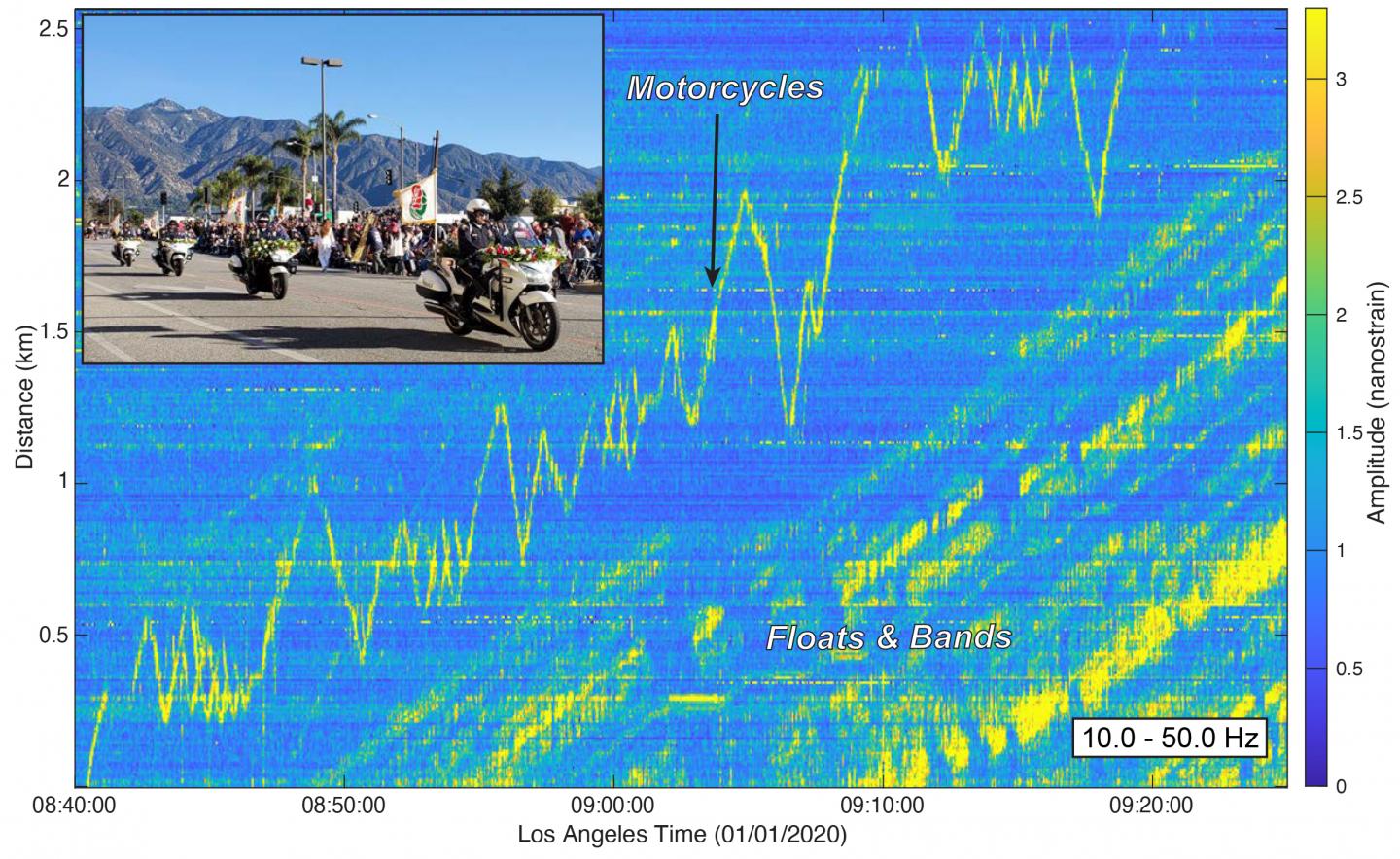
Credit: Seismological Research Letters
Yes, there’s a prize for the most beautiful flower-filled float in the Rose Parade each year, but how about a prize for the most ground-shaking marching band? According to a new study, the 2020 honors go to the Southern University and A&M College, followed closely by the hometown Pasadena City College Honor band.
These bragging rights and other interesting signatures of the Rose Parade were captured by fiber optic telecommunications cable lying below the parade route. In Seismological Research Letters, Zhongwen Zhan of the California Institute of Technology and colleagues describe how they converted these dark or “unused” fibers within cables into a dense seismic array.
The technique, called distributed acoustic sensing (DAS), uses the tiny internal flaws in a long optical fiber as thousands of seismic sensors. An instrument at one end of the fiber sends laser pulses down the cable that are reflected off the fiber flaws and bounced back to the instrument. When an earthquake disturbs the fiber, researchers can examine changes in the size, frequency and phase of the reflected pulses to learn more about the resulting seismic waves. (Read more about DAS here.)
For the Rose Parade project, Zhan and colleagues examined data from a 2.5-kilometer (1.6 mile) stretch of cable under the parade route that contained about 400 seismic sensors. In this case, the disturbance to the cables was the compression and flexure of the roads by parade participants.
“The main goal of the Pasadena Array is to detect small earthquakes and image the geological structure underneath the city. It has been operating only since November 2019, so we actually do not have any good-sized earthquake in the city yet,” explained Zhan. “The Rose Parade, as a well-controlled event–no other traffic except the parade, traveling all in one direction at almost constant speed–provides a rare opportunity for network calibration.”
Their seismic readout “turned out to be quite broadband,” Zhan said. The array captured the distinct signals of zig-zagging police motorcycles clearing the route, the bend of the road as heavy floats weighing 16,000 to 18,000 kilograms (17.6 to 19.9 tons) passed overhead, and a series of harmonic frequencies that corresponds to the even stepping of the marching bands. The “heaviest” float measured in this way was the Amazon studios float, which contained a bus and rocket mounted on a truck.
The researchers were even able to see a gap in the DAS record when the “Mrs. Meyer’s Clean Day” float got stuck at a tight turn in the route and backed up the parade traffic for six minutes.
“This project inspires us that in the future we will probably use heavy vehicles for calibrations of DAS arrays in other cities,” Zhan said.
The annual Rose Parade has been held on News Year’s Day since 1890, and more than 700, 000 spectators crowd the curbsides each year. The event takes place before the Rose Bowl, an American college football game.
###
Media Contact
Becky Ham
[email protected]
Related Journal Article
http://dx.





